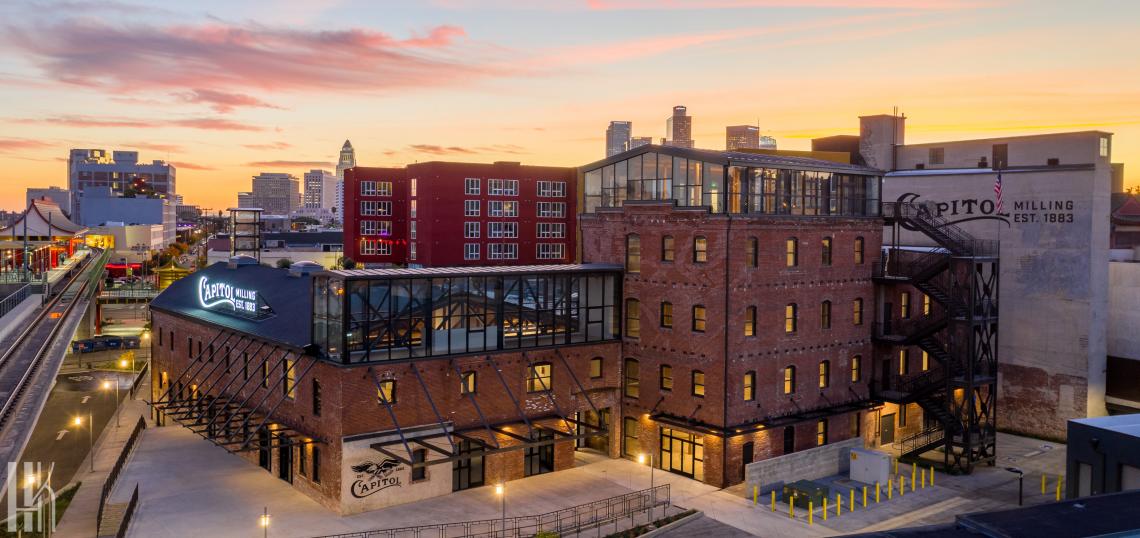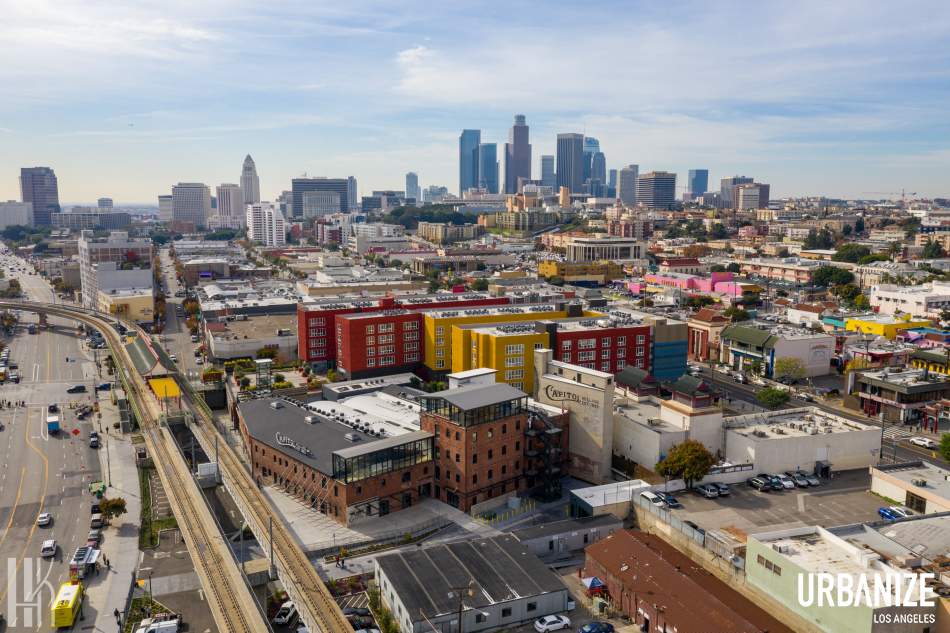The restoration of the Capitol Milling complex - a 19th-century flour mill in Chinatown that includes some of the oldest buildings in Los Angeles - is finally complete.
The Riboli family, owners of the San Antonio Winery, has spent the past three years rehabilitating the property, which sits just north of Metro's Chinatown Station at 1231 N. Spring Street. The collection of eight buildings - ranging between three and five stories in height - comprises approximately 60,000 square feet of office, retail, and restaurant space with parking for approximately 30 vehicles.
South Pasadena-based architecture firm Workshop Design Collective designed the restoration project, which emphasized the property's "rich architectural heritage" of exposed brick, timber framing, and large vaulted spaces. The project also included the addition of small penthouse structures, as well as the activation of roof levels as amenity space.
Asking rates for the property are $4.50 per square feet, according to a leasing brochure.
The Capitol Milling site was built in its current form in the 1880s, though there is evidence that portions of the complex date to the 1850s.
According to the Jewish Journal, the Capitol Milling site was initially developed in 1838, when early Los Angeles entrepreneur Abel Stearns constructed a flour mill on the property. In the 1880s, the property would come under the ownership of Jacob Loew, who along with his extended family, operated the property as a flour mill until 1998, when the business shuttered and the property was sold - eventually coming into the possession of the Riboli family.
The buildings which stands at 1231 N. Spring Street were mostly developed in the 1880s, making them some of the oldest extant structures in the City of Los Angeles. However, a 2016 examination of Capitol Milling's history by the website Wandering in LA found evidence that portions of the property may date to as early as the 1850s.
The property is also notable for its history with the Zanja Madre, the historic aqueduct which supplied water to early Los Angeles. In the mid-19th century, Eagle Mills - the predecessor to Capitol Milling - was home to the first water wheel in Los Angeles used to produce power, as detailed by Water and Power Associates:
At College and San Fernando Streets, the zanja made an 18-foot drop in a three-foot brick conduit, supplying water power to the old Eagle Mills, called “Molina de la Zanja” by the early Spanish Californians. The Eagle Mills, on the site of the present Capitol Milling Company, were built in the early ‘50’s, and have made history by having been the first instance of the development of industrial power, by water or otherwise, in the city of Los Angeles.
The restored Capitol Milling Building finds itself of an epicenter of a neighborhood in transition, with several large developments planned or under construction nearby.
Just north on Spring Street, a former Southern Pacific rail yard has been converted into the 32-acre Los Angeles State Historic Park.
Just east toward Main Street, work is underway on a 318-unit apartment complex known as the Llewellyn, and an additional 725 apartments are planned as part of the controversial College Station development.
High-rise developments are also slated to rise on properties flanking the Capitol Milling complex - including a 27-story tower planned at 942 North Broadway and a multi-building project planned by the Riboli family in partnership with Lincoln Property Company.
- Capitol Milling Building (Urbanize LA)








